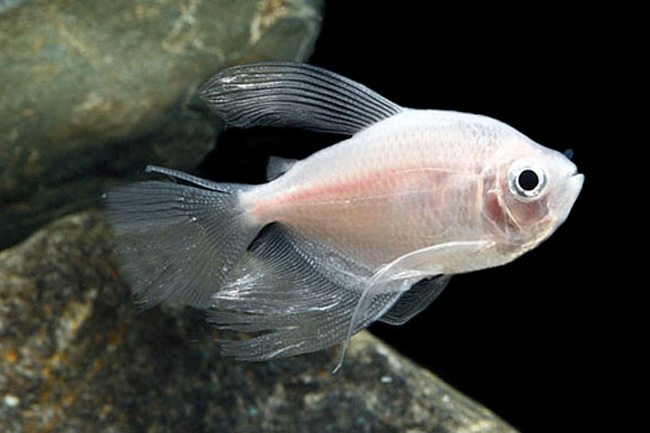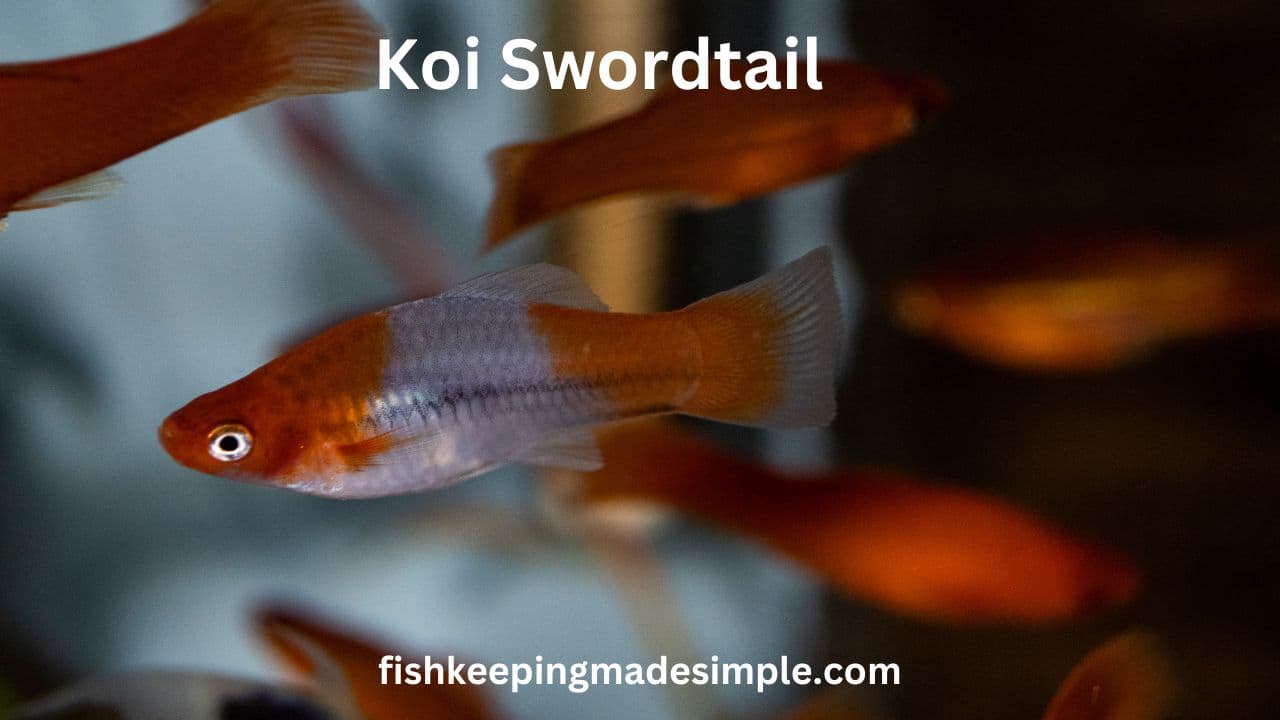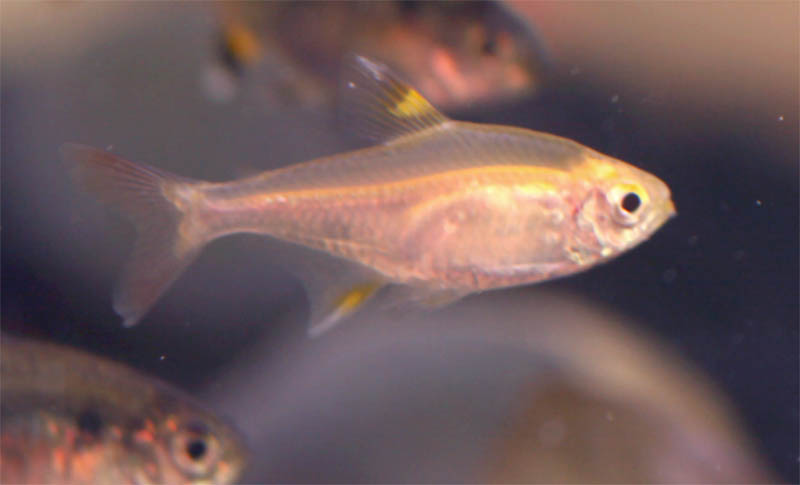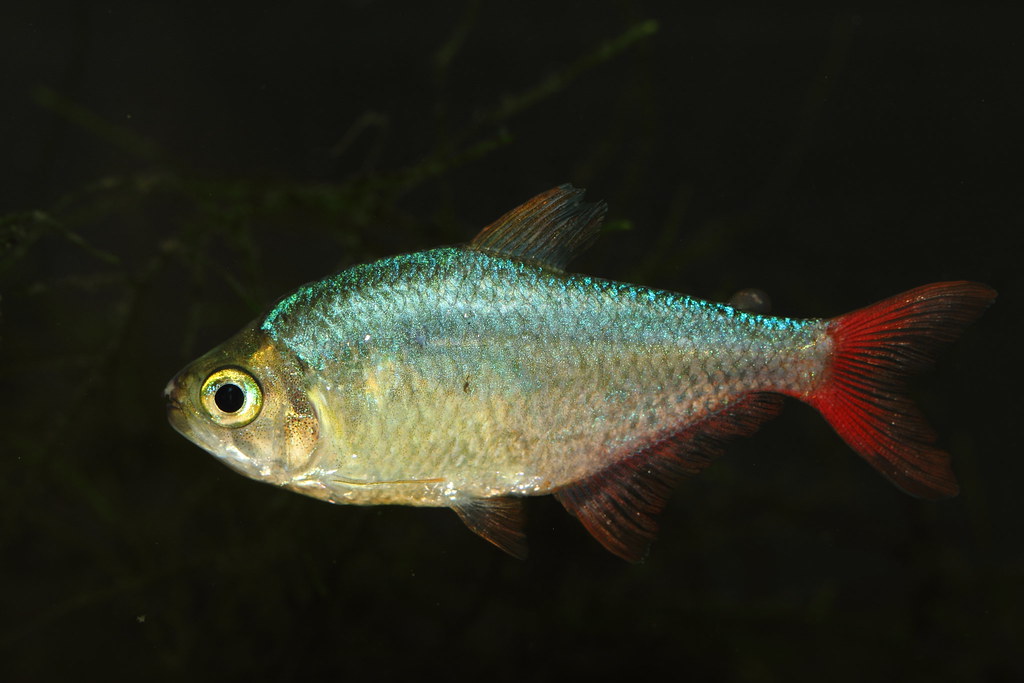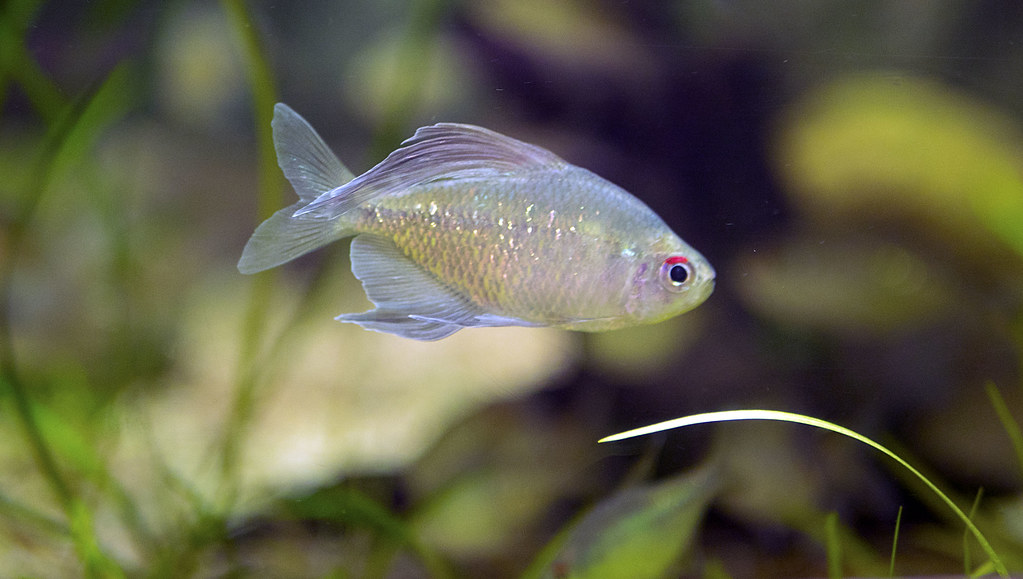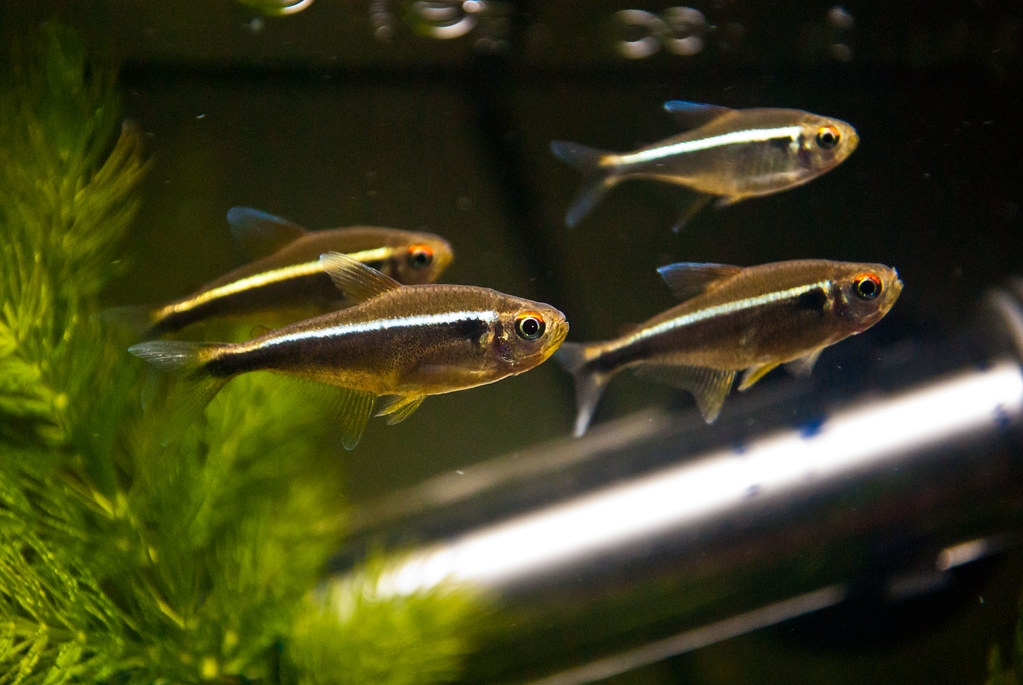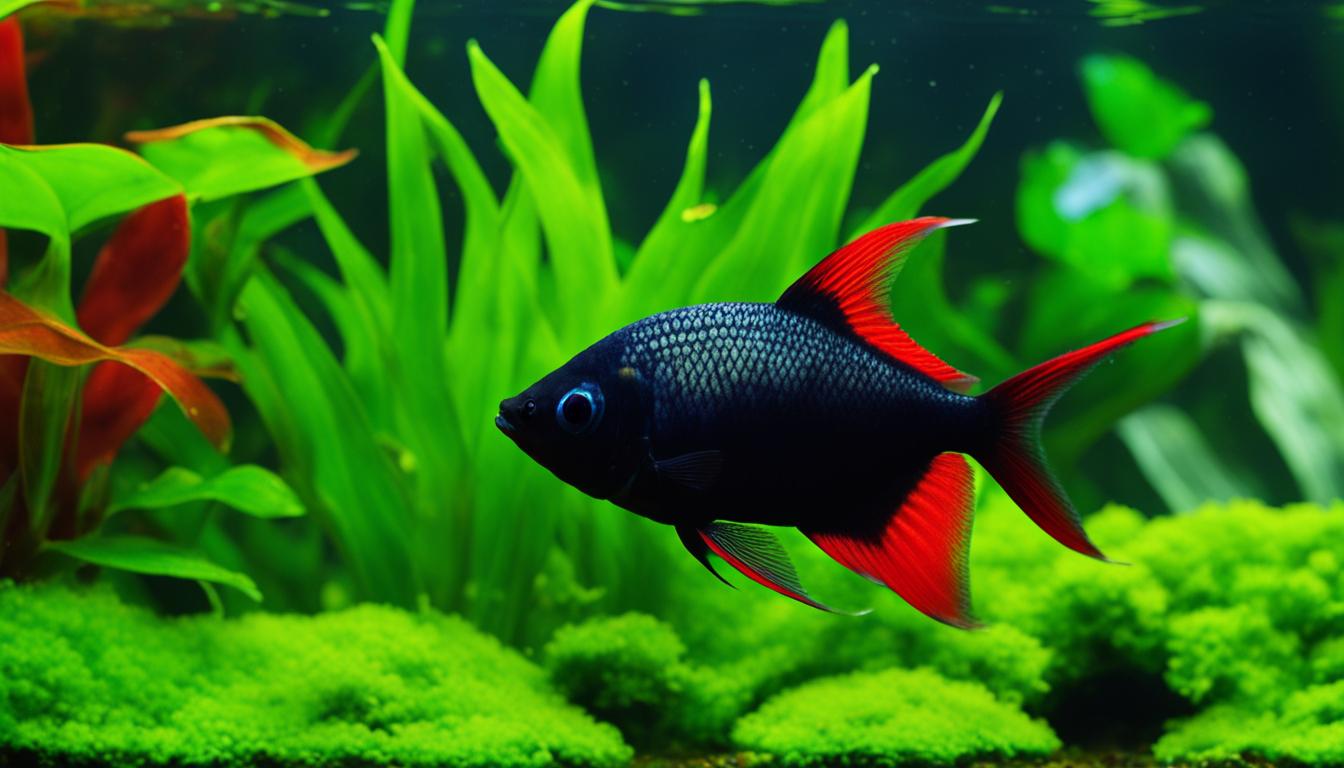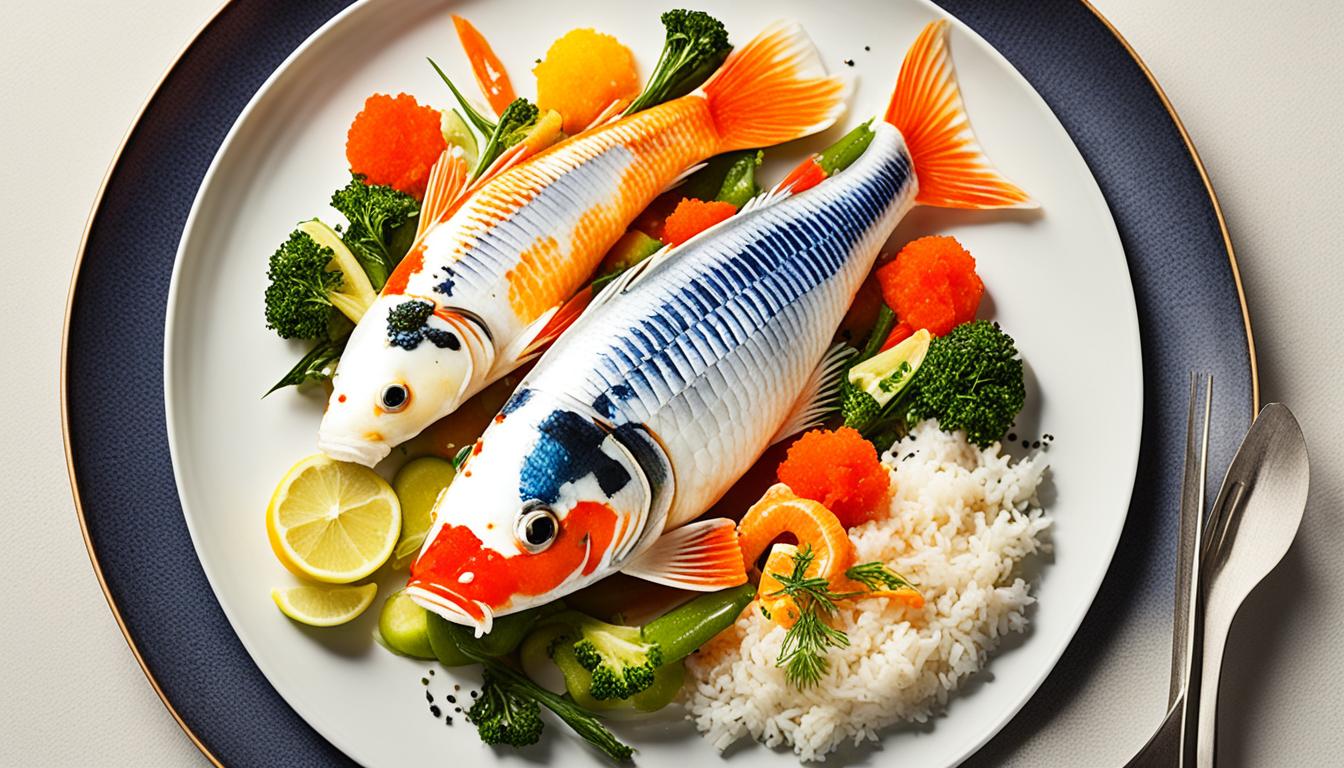The White Tetra Fish is a visually striking species that can live up to seven years. They are peaceful and make a great addition to a freshwater aquarium community.
They require tank mates that have similar water conditions and are not aggressive toward tetras, such as neon tetras, rummynose tetras, and ember tetras. These tetras are considered semi-aggressive due to their tendency to fin-nip, so it’s best to avoid housing them with slow-moving fish that have long, flowing fins.
White tetras generally get along well with other tetras, rasboras, danios, corydoras, and some dwarf cichlids. In terms of size, white tetras can vary, but typically they grow to a moderate size.
Table of Contents
Introduction To White Tetra Fish
White Tetra Fish are visually striking and peaceful freshwater fish that can live for up to seven years. They are best kept with tank mates that have similar water conditions and are not aggressive towards Tetras. Avoid housing them with slow-moving fish with long fins, but they generally get along well with other Tetras, rasboras, danios, corydoras, and some dwarf cichlids.
Overview Of The White Tetra Fish Species:
The White Tetra Fish, also known as the White Skirt Tetra or White Widow Tetra, is a popular freshwater fish species among aquarium enthusiasts. With its striking appearance and peaceful nature, it adds beauty and tranquility to any tank. Let’s explore its physical characteristics, natural habitat, and distribution.
Physical Characteristics Of White Tetra Fish:
- Medium-sized fish with an elongated and slightly compressed body shape.
- The body is primarily silver or white, and the fins have a vibrant reddish-orange coloration.
- It has a small mouth and a single dorsal fin located on its back.
- The average size of an adult White Tetra Fish ranges from 2 to 3 inches.
Natural Habitat And Distribution:
- White Tetra Fish originate from South America, specifically the river basins of the Amazon and Paraguay.
- They are primarily found in slow-moving rivers, streams, and floodplains with densely vegetated areas.
- Due to their adaptability, White Tetra Fish can also survive in other freshwater environments, such as ponds and lakes.
Key points:
- White Tetra Fish are a popular freshwater fish species known for their peaceful nature and striking appearance.
- They have a medium-sized body with silver or white coloration and reddish-orange fins.
- Native to the river basins of South America, they thrive in slow-moving rivers, streams, and densely vegetated areas.
White Tetra Fish Tank Setup
The White Tetra Fish tank setup is perfect for showcasing these visually striking fish. With the right tank mates and proper care, these peaceful tetras can thrive and live up to seven years. Avoid housing them with slow-moving fish with long fins to prevent fin-nipping.
Size Requirements For The Aquarium:
- The White Tetra Fish requires a tank size of at least 10 gallons.
- A larger tank provides a more spacious and comfortable environment for these fish.
Water Parameters And Temperature For White Tetra Fish:
- The ideal water temperature for White Tetra Fish is between 72-78 degrees Fahrenheit.
- The pH level should be maintained between 6.0-7.5.
- The water hardness should be around 5-12 dGH.
Filtration And Aeration In The Tank:
- It is crucial to have a good filtration system for the White Tetra Fish tank.
- A filter helps maintain water quality by removing impurities and keeping the water oxygenated.
- Aeration, such as an air pump or airstone, promotes proper oxygen exchange and ensures a healthy environment for the fish.
Tank Decorations And Plants Suitable For White Tetra Fish:
- Provide a variety of hiding spots and vegetation for the White Tetra Fish.
- Use rocks and driftwood to create caves and crevices for them to explore.
- Dense plants like Java Moss, Amazon Sword, and Hornwort help simulate their natural habitat and provide cover.
- Floating plants such as Water Sprite or Duckweed serve as a great addition to the tank, as they provide shade and shelter.
- Avoid sharp or rough decorations that might injure the fish.
Remember to regularly test the water parameters and ensure they are within the recommended range to keep your White Tetra Fish healthy and thriving in their tank setup. Happy fishkeeping!
White Tetra Fish Care And Maintenance
White tetra fish care and maintenance is important to ensure their well-being and longevity. They thrive in a peaceful freshwater aquarium community and can live up to seven years. When choosing tank mates, consider species like neon tetras, rummynose tetras, and ember tetras that have similar water conditions and are not aggressive towards tetras.
White Tetra Fish Care And Maintenance
Feeding habits and dietary requirements:
- White Tetra Fish are omnivorous, which means they eat both plant-based and animal-based foods.
- Provide them with a balanced diet consisting of high-quality flake or pellet foods specifically designed for tetras.
- Supplement their diet with live or frozen foods such as brine shrimp, bloodworms, or daphnia.
- Offer them a variety of food options to ensure they receive all the necessary nutrients.
- Feed them small amounts of food multiple times a day to prevent overfeeding and maintain water quality.
Common health issues and diseases in White Tetra Fish:
- White Tetra Fish are generally hardy, but they can still be prone to certain health issues.
- Ich, or white spot disease, is a common ailment that affects many fish species, including White Tetra Fish. It is characterized by small white dots on the fish’s body.
- Fin rot, which is the deterioration of the fish’s fins, can also occur if water quality is not properly maintained.
- Poor water conditions, such as high ammonia or nitrate levels, can also lead to stress, diseases, and overall poor health in White Tetra Fish.
Tips for maintaining optimal water quality:
- Regularly test the water parameters, including temperature, pH, ammonia, nitrite, and nitrate levels, using appropriate test kits.
- Keep the water temperature between 74-78°F (23-26°C) to provide the ideal environment for White Tetra Fish.
- Maintain a pH level between 6.5-7.5, as this is the recommended range for most tropical fish.
- Install a good filtration system to keep the water clean and free from toxins.
- Perform regular water changes of around 25% every 1-2 weeks to remove accumulated waste and maintain water quality.
Regular maintenance routines for the aquarium:
- Clean the aquarium glass regularly to remove algae buildup using a algae scraper or magnetic cleaner.
- Gravel vacuum the substrate during water changes to remove debris and prevent the accumulation of waste.
- Trim any excess plants or remove dead leaves to maintain a healthy and aesthetically pleasing aquarium.
- Check the functionality of the equipment, such as the heater, filter, and lights, to ensure they are working properly.
- Keep a regular schedule for water tests, water changes, and general tank maintenance to establish a routine and ensure the long-term health of your White Tetra Fish.
Remember, keeping White Tetra Fish requires a commitment to proper care and maintenance. By providing them with a balanced diet, maintaining optimal water quality, and following regular maintenance routines, you can ensure they thrive in their aquarium habitat.
Breeding White Tetra Fish
The White Tetra Fish, also known as the White Skirt Tetra, is a visually striking and peaceful addition to a freshwater aquarium community. They can live up to seven years and are easy to breed, making them a great choice for beginner fishkeepers.
Understanding The Breeding Behavior Of White Tetra Fish
White Tetra Fish are known to be relatively easy to breed compared to other fish species. Understanding their breeding behavior is crucial to successfully breed them in captivity. Here are some important points to note:
- Breeding behavior: White Tetra Fish are egg scatterers, meaning the female will release her eggs into the water, and the male will fertilize them. They are not known to exhibit any elaborate courtship rituals like some other fish species.
- Spawning triggers: To stimulate breeding behavior, it is important to maintain optimal conditions such as water temperature, quality, and lighting. Additionally, introducing a separate breeding tank can help simulate their natural environment.
- Pairing for breeding: To encourage breeding, it is recommended to have a male-female ratio of 1:1. Creating balanced pairs allows for better chances of successful mating.
- Establishing territories: Providing an environment that mimics their natural habitat is crucial. This includes adding vegetation, hiding spaces, and suitable substrate. These elements help create territories, providing a sense of security for the Tetra Fish during breeding.
Creating The Right Breeding Conditions In The Tank
Creating suitable breeding conditions is essential for the successful breeding of White Tetra Fish. Here are some factors to consider when setting up the breeding tank:
- Water quality: Maintaining optimal water parameters is crucial. This includes regular monitoring of temperature, pH levels, ammonia, nitrite, and nitrate levels. Ensuring clean, well-oxygenated water is essential for healthy breeding behavior.
- Temperature and lighting: White Tetra Fish breed best in warm water temperatures ranging between 75-82°F (24-28°C). Providing a stable and consistent temperature in the breeding tank is essential. Additionally, using soft lighting can help stimulate breeding behavior.
- Vegetation and hiding spots: Creating a natural environment with live plants, moss, or spawning mops gives the Tetra Fish a comfortable and secure place to lay their eggs. These plants also provide a food source for the fry once they hatch.
- Separation from other fish: It is crucial to isolate the breeding pair in a separate tank to prevent other fish from eating the eggs or disturbing the breeding process. This allows for better control over the breeding conditions and increased chances of successful breeding.
Spawning Process And Caring For The Eggs
Once the breeding pair has successfully mated, the female White Tetra Fish will release her eggs, while the male fertilizes them. Here’s what you need to know about the spawning process and caring for the eggs:
- Egg laying: The female White Tetra Fish will scatter eggs throughout the breeding tank. These tiny white eggs will attach themselves to plants, moss, or any other suitable surface.
- Collecting the eggs: To prevent the breeding pair from consuming their eggs, it is advisable to separate them from the spawning tank once the eggs have been laid. This allows for better control and monitoring of the eggs.
- Incubation period: The eggs typically hatch within 24-48 hours, depending on the water temperature. During this time, it is important to maintain stable water conditions and ensure the eggs are not disturbed.
Care For Fry And Raising Young White Tetra Fish
Once the White Tetra Fish eggs hatch, it is crucial to provide proper care for the fry to ensure their survival and growth. Here are some key points to remember:
- Feeding the fry: Initially, the fry will survive on their yolk sacs. After a couple of days, they will start swimming and require small, live foods such as baby brine shrimp, microworms, or commercially available fry food. It is essential to provide frequent, small feedings to ensure their growth.
- Water quality and tank maintenance: Regular water changes, maintaining optimal water parameters, and keeping the tank clean are crucial for the health and growth of the fry. Monitoring water quality closely and performing necessary maintenance is vital.
- Growth and development: As the fry grow, they will require larger food particles. Gradually introducing crushed flakes or micro pellets will support their growth and development. It’s important to monitor their eating habits and adjust the feeding regimen accordingly.
- Separating the fry: As the fry grow, they may become territorial and compete for space and food. It is advisable to separate them into different tanks or compartments to ensure their well-being and reduce aggression.
Remember, successfully breeding and raising White Tetra Fish requires patience, proper conditions, and careful monitoring. With the right approach, you can witness the fascinating cycle of life as the fry grow into beautiful adults.
Tank Mates For White Tetra Fish
White tetra fish, also known as white skirt tetras, are best kept with tank mates that have similar water conditions and are not aggressive towards tetras. Popular companions for white tetras include neon tetras, rummynose tetras, and ember tetras, as they thrive in the same environment and do not require a large space to live.
Compatible Fish Species For Cohabitation With White Tetra Fish:
- Neon tetra: Peaceful and small in size, making them a great companion for White Tetra Fish.
- Cory catfish: Bottom-dwelling and non-aggressive, they can peacefully coexist with White Tetra Fish.
- Kuhli loach: Another bottom-dwelling fish that is compatible with the peaceful nature of White Tetra Fish.
- Harlequin rasbora: Peaceful and sociable, they create a visually appealing and harmonious tank environment.
- Danio margaritatus: Known as the celestial pearl danio, they are small and peaceful, making them suitable tank mates for White Tetra Fish.
- Bolivian ram: A calm and friendly fish that adds color and variety to the tank.
Choosing Peaceful And Non-Aggressive Tank Mates:
- Compatibility is crucial when selecting tank mates for White Tetra Fish to avoid conflict and stress.
- Look for fish species that have similar temperaments and feeding habits.
- Avoid aggressive or territorial fish that may harm or intimidate the White Tetra Fish.
- Ensure that tank mates have similar water parameter requirements to maintain a healthy environment for all species.
- It is advisable to introduce new fish to the tank gradually to minimize stress and aggression.
Benefits Of Having Compatible Tank Mates For White Tetra Fish:
- Tank mates can create a more visually appealing and dynamic aquarium.
- Compatible fish species can provide a sense of security and companionship for White Tetra Fish.
- Some tank mates may have complementary feeding habits, resulting in a cleaner and healthier tank environment.
- Peaceful and non-aggressive tank mates can help reduce stress levels in White Tetra Fish.
- Observing the interactions between different fish species can be educational and entertaining for fish enthusiasts.
Remember to create a natural and harmonious tank habitat by considering factors such as water parameters, space requirements, and compatible behaviors when choosing tank mates for White Tetra Fish.
White Tetra Fish Variants And Hybrids
White Tetra Fish variants and hybrids, like the White Skirt Tetra, are visually striking and easy to care for freshwater fish. They have a peaceful nature and can live up to seven years, making them an excellent choice for beginner fishkeepers.
However, they should not be housed with slow-moving fish with long fins due to their tendency to fin-nip.
White Tetra Fish: Variants And Hybrids
Overview Of Different Variations And Hybrids Of White Tetra Fish
White Tetra Fish have several variations and hybrids that have been bred over the years. These variations and hybrids offer a unique set of characteristics and features, making them appealing to fish enthusiasts. Here are some of the most popular ones:
Distinct Characteristics And Features Of Each Variant
- Longfin White Skirt Tetra:
- Long, flowing fins that give them an elegant appearance.
- They have a silvery-white body with a translucent quality.
- Peaceful and social fish that thrive in a community aquarium.
- Blushing Tetra:
- Their name comes from the pinkish blush that appears on their cheeks.
- They have a white or silvery body with a hint of pink or orange.
- Active and lively fish that add a pop of color to any aquarium.
- GloFish White Skirt Tetra:
- Genetically modified variant that glows under fluorescent lighting.
- They are available in different colors like red, green, blue, and purple.
- Easy to care for and perfect for beginners.
- Widow Tetra:
- A hybrid between the White Skirt Tetra and Black Widow Tetra.
- They have a black body with a white or silver stripe running horizontally.
- Active swimmers that bring a striking contrast to the aquarium.
Care Requirements And Considerations For Specific Variants
- Longfin White Skirt Tetra:
- Prefers a well-maintained aquarium with a temperature range of 72-78°F.
- They thrive in soft, slightly acidic water.
- Blushing Tetra:
- Requires a planted tank with plenty of hiding places.
- They enjoy a temperature range of 72-79°F.
- GloFish White Skirt Tetra:
- Can be housed in a small aquarium of at least 10 gallons.
- They are hardy and adaptable, making them suitable for beginners.
- Widow Tetra:
- Needs a larger tank with plenty of swimming space.
- Prefers a water temperature of 75-82°F.
Remember to regularly monitor water parameters, provide a balanced diet, and maintain proper filtration for all White Tetra Fish variants.
White Tetra Fish showcase the beauty of these captivating creatures. Each variant offers unique characteristics and features that make them a great addition to any aquarium. By understanding the care requirements and considerations for each variant, you can provide a suitable environment to ensure their well-being.
Happy fishkeeping!
White Tetra Fish In The Aquatic Community
The White Tetra Fish is a visually striking and peaceful addition to any freshwater aquarium community. With a lifespan of up to seven years, they can coexist with other tetras like neon tetras and rummynose tetras, as long as they share similar water conditions and are not aggressive.
White Tetra Fish In Popular Aquarium Setups:
- White Tetra Fish are a popular choice for aquarium enthusiasts due to their striking appearance and peaceful nature.
- They thrive in a variety of aquatic setups, including community tanks, planted tanks, and species-specific tanks.
- These tetras are often kept in groups of 6 or more to encourage shoaling behavior and reduce aggression.
- White Tetra Fish require clean water conditions and a well-maintained tank to thrive.
- They are compatible with a wide range of fish species, making them a versatile addition to any aquarium setup.
Community Tank Ideas Incorporating White Tetra Fish:
- White Tetra Fish can be successfully kept in community tanks due to their peaceful temperament.
- They are compatible with other small, non-aggressive fish species such as neon tetras, cory catfish, kuhli loaches, and harlequin rasboras.
- When designing a community tank, it is important to ensure that the tank size is suitable for all the species included.
- Providing plenty of hiding spots and plants will help create a natural environment and reduce stress for the fish.
- White Tetra Fish can add a touch of elegance to a community tank with their vibrant white coloration and graceful swimming style.
Unique And Interesting Facts About White Tetra Fish:
- White Tetra Fish, also known as white skirt tetras, are native to South America.
- They have a unique long-finned variety, known as longfin white skirt tetras, which adds an extra level of elegance to their appearance.
- These tetras are omnivorous and have a varied diet that includes both live and prepared foods.
- White Tetra Fish are generally peaceful but may display aggressive behavior towards their own kind or other fish with long, flowing fins.
- They are known for their schooling behavior, which means they should be kept in groups of at least 6 individuals to ensure their well-being.
- White Tetra Fish are relatively easy to care for, making them a great choice for beginner fishkeepers.
- Their striking white coloration can create a beautiful contrast in an aquarium, especially when paired with dark-colored substrate and plants.
By incorporating White Tetra Fish into popular aquarium setups, such as community tanks, and showcasing their unique characteristics, aquarium enthusiasts can enjoy the beauty and peaceful nature of these elegant fish.
Conclusion
To sum up, White Tetra Fish are visually striking and make a great addition to any freshwater aquarium community. They are easy to care for and breed, making them ideal for beginner fishkeepers. These tetras are generally peaceful, but can be semi-aggressive and may fin-nip, so it is important to choose tank mates carefully.
Other species of tetras, such as neon tetras and rummynose tetras, are compatible with white skirt tetras and do not require a large space to live. White skirt tetras can live up to seven years, providing long-term enjoyment for fish enthusiasts.
With their attractive appearance and resilient nature, white tetra fish are a popular choice for aquariums. So, if you’re considering adding some color and life to your aquarium, give white tetra fish a try!
Frequently Asked Questions On White Tetra Fish
What Fish Can Live With White Tetras?
White skirt tetras can live with other tetras, such as neon tetras and ember tetras.
How Long Do White Tetras Live?
White tetras can live up to seven years, making them a visually striking and robust fish suitable for beginner fishkeepers. They are usually peaceful but may fin-nip, so avoid housing them with slow-moving fish with long fins.
Are White Tetras Aggressive?
White tetras can be semi-aggressive due to their tendency to fin-nip, so avoid housing them with fish with long fins. They generally get along with other tetras, rasboras, danios, corydoras, and some dwarf cichlids.
How Big Do White Tetras Get?
White tetras can grow up to about 2 inches in size.
Sure, here are 20 FAQs on White Skirt Tetra fish, with the FAQ marked down as H3 formatting.
What is a White Skirt Tetra?
The White Skirt Tetra (Gymnocorymbus ternetzi) is a freshwater fish species from the characin family, native to South America. It is known for its distinctive white-edged fins and vertical black stripes.
How big do White Skirt Tetras get?
White Skirt Tetras typically grow to a maximum length of around 2-3 inches (5-7.6 cm).
Are White Skirt Tetras schooling fish?
Yes, White Skirt Tetras are schooling fish and should be kept in groups of at least 6-8 individuals. They feel more secure and exhibit natural behaviors when in a school.
What are the ideal water parameters for White Skirt Tetras?
White Skirt Tetras prefer well-oxygenated water with a pH range of 6.0 to 7.5, a temperature between 72°F to 82°F (22°C to 28°C), and soft to moderately hard water.
Do White Skirt Tetras need a lot of swimming space?
While not overly active swimmers, White Skirt Tetras appreciate a larger aquarium with plenty of open swimming areas. A minimum tank size of 20 gallons is recommended for a school.
Are White Skirt Tetras hardy fish?
White Skirt Tetras are generally considered hardy fish, but they can be sensitive to poor water conditions and stress, especially when first introduced to a new tank.
What do White Skirt Tetras eat?
White Skirt Tetras are omnivores and should be fed a varied diet consisting of high-quality flakes, micropellets, frozen or live foods like brine shrimp, daphnia, and vegetables.
Can White Skirt Tetras live with other fish?
White Skirt Tetras can be kept with other peaceful, non-aggressive fish of similar size and temperament, such as other tetras, rasboras, or danios. Avoid aggressive or fin-nipping species.
How can I tell male and female White Skirt Tetras apart?
Male White Skirt Tetras are typically more slender and have longer, more vibrant fin extensions than females. Females are often slightly larger and less colorful.
Do White Skirt Tetras need special lighting?
White Skirt Tetras do not require special lighting, but they may display their best colors under moderate to high lighting conditions.
Can White Skirt Tetras be kept in a planted aquarium?
Yes, White Skirt Tetras can be kept in a planted aquarium and will not disturb most plants. However, they may nibble on soft, delicate plants.
Are White Skirt Tetras peaceful fish?
Yes, White Skirt Tetras are generally peaceful and make good community tank inhabitants when kept with other non-aggressive species.
Do White Skirt Tetras need a specific type of substrate?
White Skirt Tetras do not have specific substrate requirements, but a fine gravel or sand substrate is recommended to prevent injury to their delicate bodies.
Can White Skirt Tetras breed in captivity?
While it is possible for White Skirt Tetras to breed in captivity, it can be challenging and requires precise water conditions, suitable spawning surfaces, and environmental triggers.
What are the signs of a healthy White Skirt Tetra?
Healthy White Skirt Tetras should be active swimmers, have bright colors, clear eyes, and a streamlined body shape. They should also have good appetites and exhibit no signs of disease or stress.
How often should I feed White Skirt Tetras?
White Skirt Tetras should be fed small amounts of food, two to three times per day, only as much as they can consume within a few minutes.
Do White Skirt Tetras need a lot of water movement?
White Skirt Tetras appreciate moderate water movement and filtration, as it mimics their natural river habitats. However, excessive flow can stress them out.
Can White Skirt Tetras be kept in a nano aquarium?
While it is possible to keep White Skirt Tetras in a nano aquarium, a minimum tank size of 20 gallons is recommended for a school to provide adequate swimming space.
Are White Skirt Tetras suitable for beginner aquarists?
White Skirt Tetras can be suitable for beginner aquarists, as they are generally hardy and peaceful. However, their schooling behavior and specific water requirements should be considered.
References
- International Federation of Online Clubs and Aquatic Societies (IFOCAS)
- Federation of British Aquatic Societies (FBAS)
- Northeast Council of Aquarium Societies (NEC)
- Federation of American Aquarium Societies (FAAS)
- Ornamental Aquatic Trade Association (OATA)

